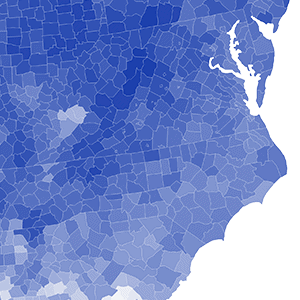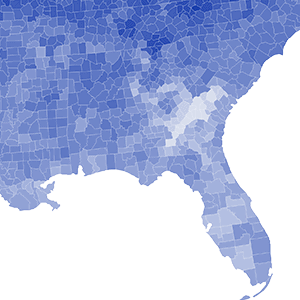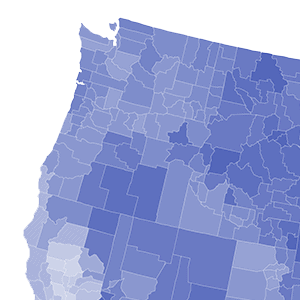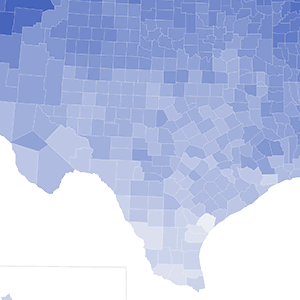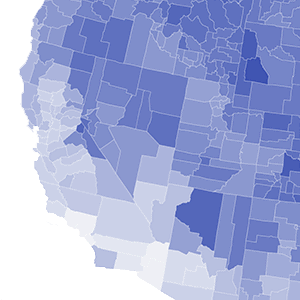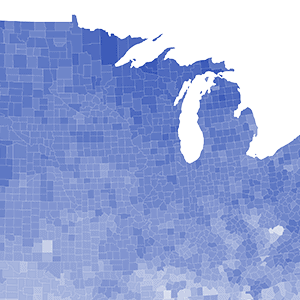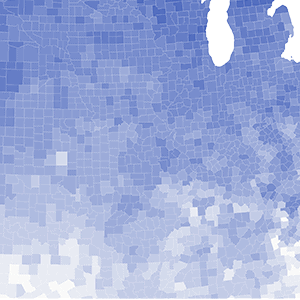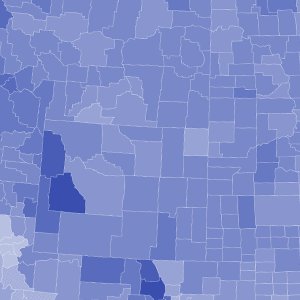HOW WEATHER AFFECTS AIR BARRIER INSTALLATIONs oN THE EAST coast
Because many traditional air barrier products available today can only be applied under certain weather conditions, you’re already facing unpredictable installation delays. Combine the two different ranges of limitations for 1) the presence of moisture, and 2) temperatures below 40°F, and your window just got even smaller, potentially wreaking havoc to your construction schedule.
That is why PROSOCO made sure their air barriers didn't have these weather limitations.
The impact of moisture and temperature on the construction schedule
Percentage of days with either 0.1" of precipitation or temperatures below 40°F in the past year.
Weather has a heavy impact on air barrier installations in the East Coast
We looked at data from across the country to see how many days out of the year have either 0.1" of precipitation or has a temperature that reaches 40°F or lower (see below on why that temperature limit is important). Here is what it looks like from Maryland up to Maine.
- Job sites in this region get hit hard by BOTH moisture and temperature issues.
- Cities in the northernmost part of the region like Buffalo, Providence, Burlington have some of the highest rates of impact in the entire country.
- At the time of writing, Franklin County New York (81%) has the seventh-highest rate of days impacted in the United States. Only mountainous counties in Wyoming (Sublette) and Colorado (Lake, Summitt, Grand, Gunnison, Clear Creek) are impacted by temperature and moisture at a higher rate.
Most air barriers have low temperature limitations that aren't that low
What to look out for
Many air barriers like this acrylic emulsion air barrier state that the product should not be applied when temperatures are below 40°F.

To avoid temperature limitations
PROSOCO's FastFlash system is a complete, monolithic building envelope system that can be applied even in temperatures below 32° F.
The impact of temps below 40° on the construction schedule
Percentage of days with temperatures below 40° in the past year
Most air barriers cannot be installed in wet conditions
What to look out for
Traditional air barrier chemistry, like acrylic emulsion technology, is made to keep water out when fully cured. But any introduction of moisture into the process before the air barrier is fully cured can cause lots of problems. Here is a common statement from acrylic emulsion air barrier literature stating that not only can they not be installed in wet conditions but cannot be installed if there is a chance of rain in the forecast. If it does happen to rain within the 16-hour window listed on the technical data sheet below, the air barrier can literally wash right off the wall.

To avoid moisture limitations
PROSOCO's FastFlash system is a complete, monolithic building envelope system that can be applied in damp conditions and it is immediately waterproof so it can withstand rain right after application.
Most air barriers cannot be to damp surfaces
What to look out for
Watch out for air barriers that can only be applied on a dry substrates. In reality, if an air barrier can only be applied in dry weather conditions to completely dry substrates, you may have to wait several days or even several weeks to make sure everything the substrates are dry, current conditions are dry and the forecast is dry as well.

To avoid moisture limitations
PROSOCO's Fast Flash system is a complete, monolithic building envelope system that can be applied in damp conditions and it is immediately waterproof so it can withstand rain right after application.
The impact of moisture on the construction schedule
Percentage of days with at least 0.1" of precipitation in the past year
All the data we analyzed shows that the combination of temperature and moisture limitations of many air barriers can add up to big problems.
